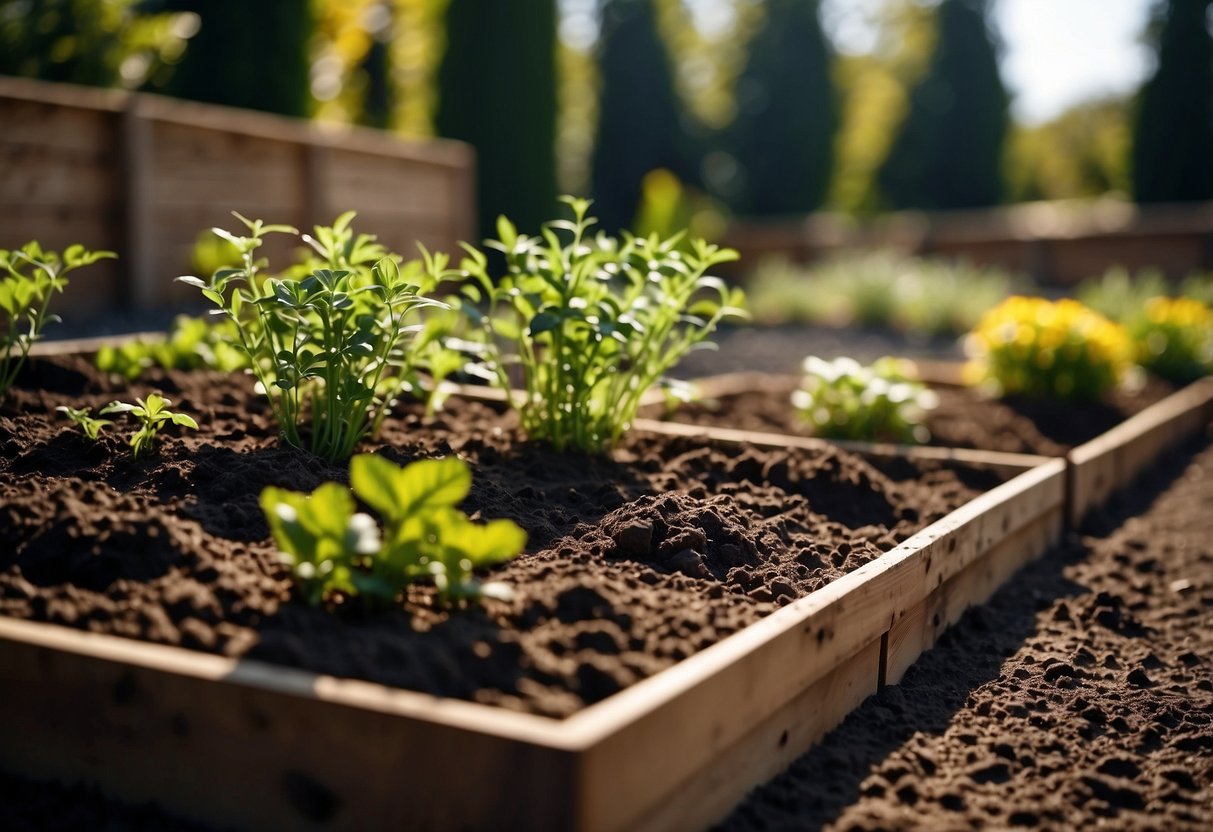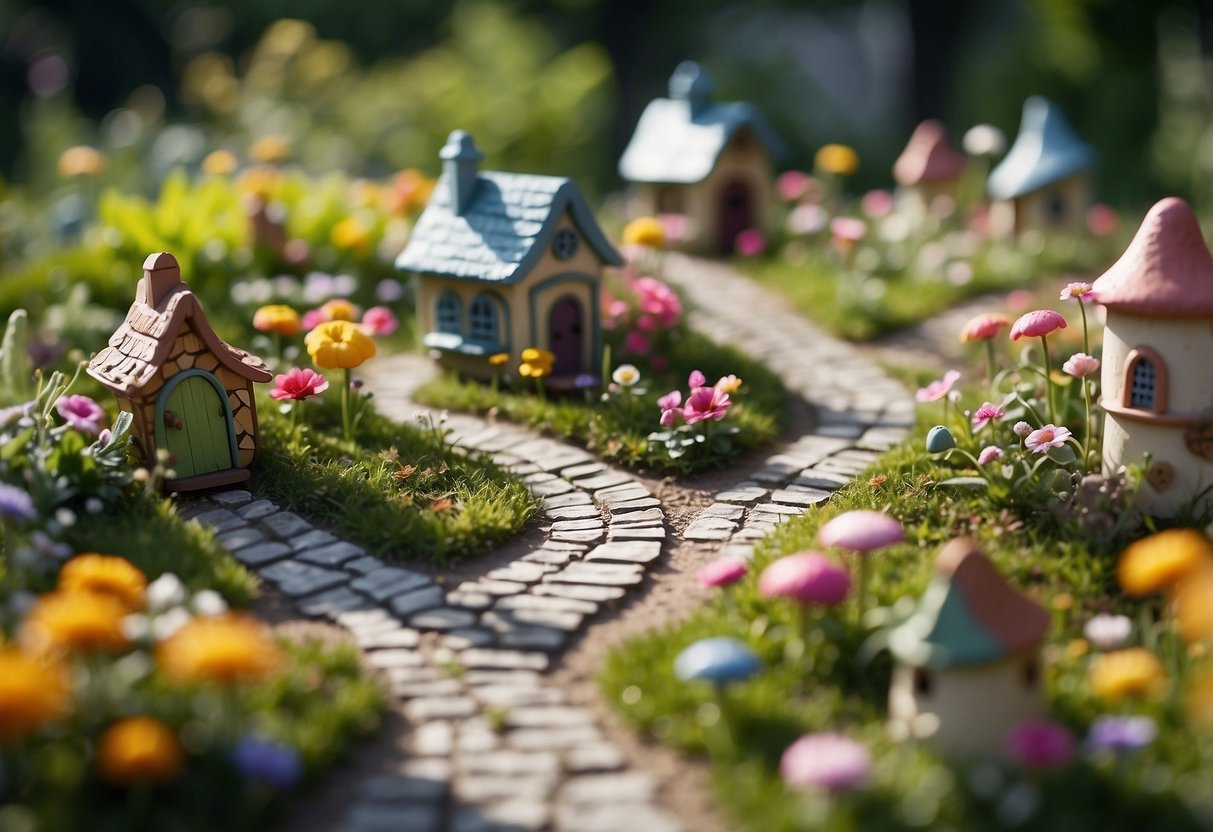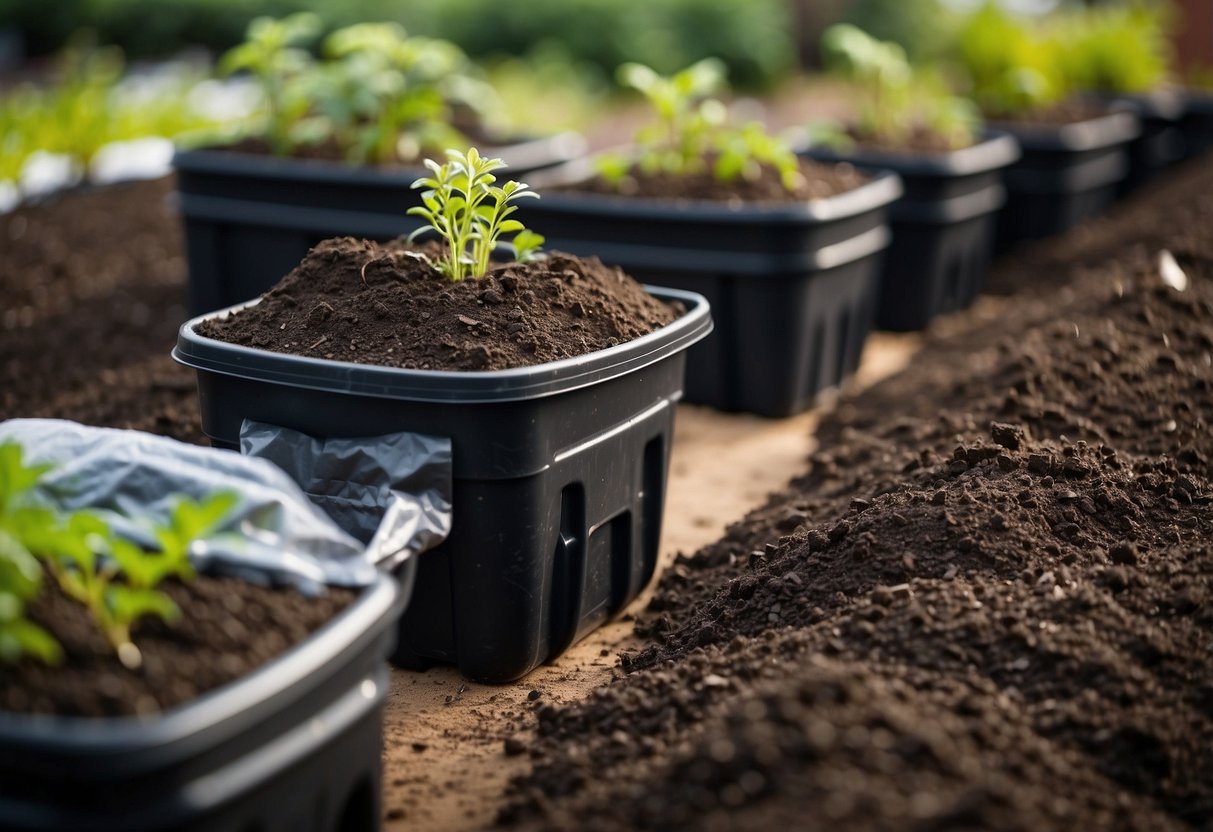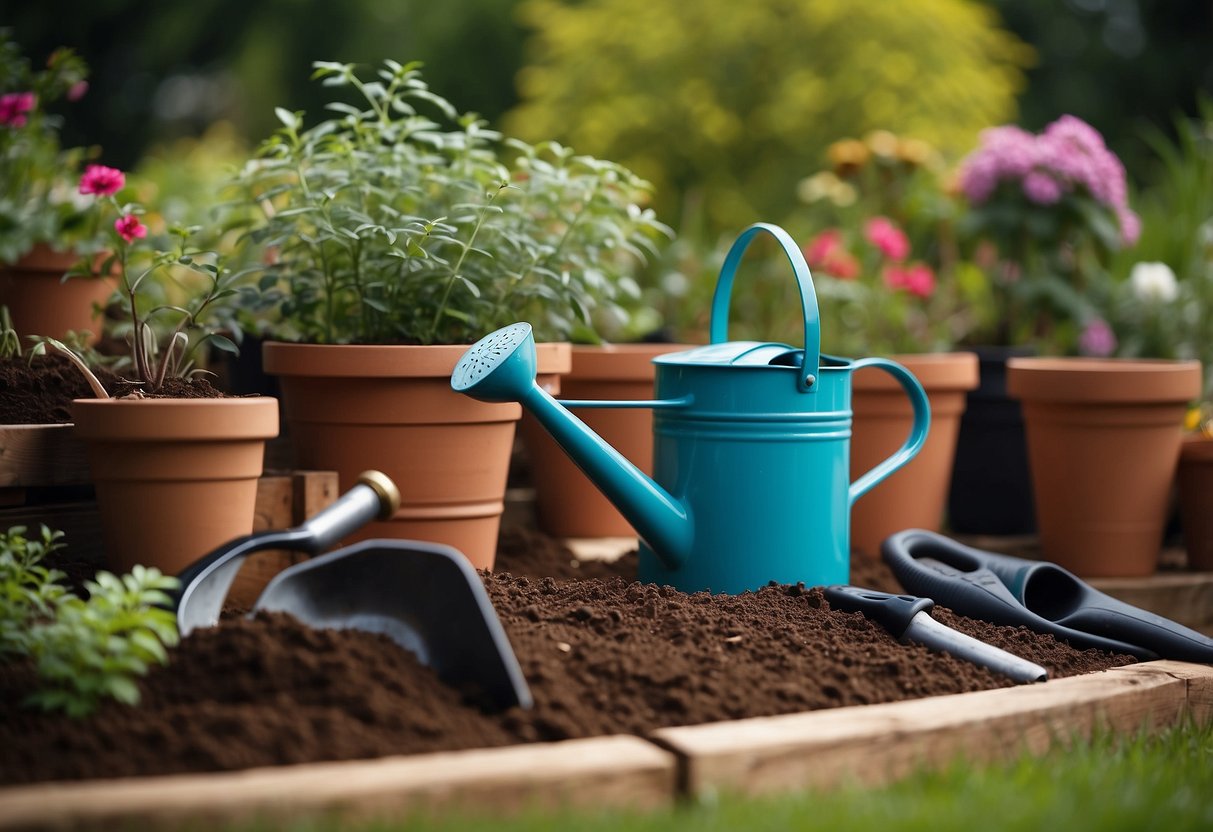Empty Garden Bed Ideas: Creative and Fun Solutions
Empty garden beds can be a blank canvas, full of potential and waiting for your creative touch. Whether you’re an experienced gardener or just starting out, there are endless possibilities to explore. From simple designs to more intricate layouts, you can transform your garden space into a vibrant and thriving area.

Curious how to turn an empty garden bed into a lush haven? This article will guide you through different ideas to make the most of your garden bed space. With a bit of inspiration and effort, you’ll soon have a beautiful garden to enjoy.
1) Raised Herb Garden

A raised herb garden is a fantastic way to make use of your garden bed. It allows you to grow a variety of herbs with ease. You can choose herbs like basil, chives, and parsley, which are low maintenance and perfect for raised beds.
Make sure to place your raised herb garden in a sunny spot. Most herbs need at least 6-8 hours of sunlight each day. This will help them grow strong and flavorful.
Ensure the soil in your raised bed is well-drained. A mix of topsoil, compost, and peat moss works great. This creates the ideal environment for your herbs to thrive.
2) Succulent Planter

Transforming an old teapot into a succulent planter is a great way to add charm to your garden bed. Drill a few drainage holes to prevent rot and fill the pot with a good potting mix.
Succulents don’t need much water, making them a low-maintenance option. You can also use a clamshell or monogram letter for a unique look.
For a more dramatic effect, you can build a tiered planter to create height and interest.
3) Pollinator Paradise

Transform your garden bed into a vibrant pollinator paradise. Start by planting a variety of flowers in different colors. Bees love blue, purple, and yellow. Butterflies are attracted to red, pink, and orange.
Using raised beds can help create a pollinator haven even in urban spaces. Raised beds are great for patios and small yards, making them accessible and versatile. Your garden will attract bees and butterflies, supporting local biodiversity.
Consider adding native plants that are well-suited for your climate and attract pollinators like bees and butterflies. They provide the best food sources and habitat.
Make sure your garden gets plenty of sunlight. Most pollinator-friendly plants thrive in sunny spots. Regularly check for and remove any unhealthy plants to keep your garden thriving.
Creating a pollinator paradise in your empty garden bed is a rewarding way to give back to nature while enjoying a beautiful, colorful garden space.
Feel free to explore more about pollinator gardens at Epic Gardening or American Meadows.
4) Fairy Garden

Transform your empty garden bed into a magical fairy garden. Start by creating a focal point with a small fairy house. Add miniature accessories like tiny benches, arbors, and pathways to bring the space to life.
Use plants like ferns, moss, and creeping thyme for ground cover. Include colorful, blooming plants and vining options to fill the space beautifully.
Don’t forget to include fairy figurines and small woodland creatures. These touches will make your garden feel like a whimsical world straight out of a storybook. Get creative and let your imagination run wild!
5) Vegetable Nursery

Creating a vegetable nursery in your garden bed allows you to grow seedlings in a controlled environment. You can start with seeds or small plants and nurture them until they are ready to be transplanted.
Use a mix of soil and compost to give your seedlings the nutrients they need.
Water the nursery regularly and keep it in a sunny spot to ensure healthy growth.
Consider using raised garden beds with rocks to add durability and drainage.
6) Zen Rock Garden

A Zen rock garden can transform your empty garden bed into a peaceful retreat. Use gravel or sand to create a simple base. Rake it into calming patterns.
Add some large rocks or stones to symbolize mountains or islands. You can vary their size and shape for visual interest.
Incorporate small plants like moss or low-growing shrubs around the rocks for a touch of greenery.
7) Flower Patch

A flower patch can bring life and color to any garden bed. You can use a mix of different flowers to create a vibrant display. Some good options include daisies, tulips, and marigolds.
Choose plants that bloom at different times of the year. This way, your garden will always have something in bloom. Use low-maintenance flowers like bunching grasses for added texture.
Consider adding some foliage plants to your flower patch. Ferns and hostas can add depth and interest, turning your garden bed into a beautiful oasis of greenery.
8) Perennial Border

Perennial borders offer vibrant colors year after year with minimal effort. Choose plants like irises, daylilies, and sedums. These plants bloom at different times, ensuring a continuous display.
Add dwarf or miniature versions of popular perennials for variety. This variety creates visual interest without overwhelming your space.
Consider mixing in low-maintenance options like hostas and columbines. This way, you enjoy a lush garden with less upkeep.
9) Butterfly Haven

Transforming your garden bed into a Butterfly Haven can be a delightful project. First, pick a sunny spot, as butterflies thrive in sunlight. Prepare the soil by loosening it and removing weeds.
Choose native flowers that attract butterflies. Plants like milkweed, zinnias, and daisies are great options. Avoid using pesticides, as they can harm butterflies and their caterpillars.
Lastly, add a shallow water source, like a birdbath, for the butterflies to drink from. These simple steps will help you create a welcoming environment for these beautiful insects.
10) Shade-Loving Ferns

Adding ferns to your shade garden can create a lush, green look. Ferns like the Cinnamon Fern, with its tall, reddish-brown fronds, can grow up to 5 feet tall. Perfect for edges of ponds or woodlands.
The soft tree fern, native to Australia, grows up to 15 meters tall and offers a feathery canopy. This fern can fill large, shady spaces beautifully.
The Painted Lady Fern has a unique, slightly upright habit. Its fronds, reaching 15-20 inches, pair well with tall ferns like the ostrich fern. They thrive in nutrient-rich, moist soil.
Preparing Your Garden Bed

To get your garden bed ready for planting, you need to pay attention to the soil and have the right tools. This will ensure your plants grow strong and healthy.
Choosing the Right Soil
Start by checking the type of soil in your garden. The soil should be loose and well-draining, allowing water to reach the roots easily without pooling.
You might want to consider adding compost or organic matter to improve soil structure and provide essential nutrients. Compost not only enriches the soil but also helps with moisture retention.
Opt for soil that is slightly acidic, as many plants thrive in this environment. You can test the soil’s pH and adjust it if necessary with lime (to raise pH) or sulfur (to lower pH). Mixing in some peat moss can also help to keep the soil fluffy and airy.
Essential Tools and Materials
Having the right tools makes prepping your garden bed much easier. You’ll need basic tools like a shovel, rake, and hoe for digging and leveling the soil.
Consider getting a soil tester to check for pH levels and nutrients.
A wheelbarrow can help you transport soil and compost efficiently. Mulch is another important material; applying a layer of mulch will help keep weeds at bay and retain moisture in the soil.
Also, ensure you have gloves and kneepads to protect yourself while working. By having these tools and materials on hand, you can create the perfect environment for your plants to flourish.
Design and Layout Ideas

When planning your empty garden bed, combining creative plant patterns with well-chosen hardscape elements can transform your space into a beautiful and functional area.
Creating Patterns with Plants
Using plants to create patterns can make your garden more visually appealing. Start by choosing plants with different colors, textures, and heights. For example, you can alternate rows of bright flowers with darker foliage plants to create a striking contrast.
Consider these ideas:
- Checkerboard Patterns: Use two types of plants and alternate them in a checkerboard layout.
- Striped Rows: Plant in rows of different colors to create stripes.
- Seasonal Blooms: Choose plants that bloom at various times of the year to ensure your garden always has interest.
Mixing flower types like bunching grasses and perennials can also add depth and variety. Bunching grasses provide structure and attract pollinators, enhancing the garden’s ecosystem.
Incorporating Hardscape Elements
Hardscape elements like stones, pathways, and trellises add structure and functionality to your garden. A stone pathway can guide visitors through the garden, making it more inviting and easier to maintain.
Some ideas include:
- Raised Beds or Planters: Raised beds can be made from wood, stone, or metal and help define different garden areas.
- Water Features: Small fountains or ponds can add a calming element to your garden.
- Trellises and Arches: These can support climbing plants and add vertical interest.
These elements not only improve the garden’s aesthetics but also make maintenance easier and provide variety in height and texture. By combining living plants with these hardscaping techniques, you can create a garden that’s both beautiful and practical.
Maintenance Tips

To keep your empty garden bed tidy and ready for planting, focus on watering effectively and controlling weeds. These practices will ensure a healthy environment for any future plants.
Watering Strategies
Consistent watering is vital even if your garden bed is empty. This prevents the soil from drying out and becoming hard. Water the bed deeply once or twice a week to keep the soil moist down to several inches.
Set up a drip irrigation system to make this process easy. Drip systems save water by slowly releasing it directly to the soil. Using mulches like wood chips or straw can help retain moisture, reducing the need to water frequently.
Keep an eye on rainfall in your area. If it rains enough, you might not need to water at all. Always check the soil’s moisture level by sticking a finger into the ground to ensure it isn’t too dry or too wet.
Weed Control
Weeds can easily take over an empty garden bed if not managed. Mulching is one of the best ways to control weeds. Add a 2-3 inch layer of organic mulch, such as straw or wood chips, to block weed growth.
Another effective method is using landscape fabric. Lay the fabric down over the soil and cut slits where you plan to plant. This barrier stops weeds from growing while allowing water and nutrients to pass through.
Regularly inspect your garden bed for any weed growth. Hand-pull any weeds that appear, ensuring you remove the roots to prevent regrowth. You can also use a natural weed-killing spray made from vinegar and salt for tougher areas.







